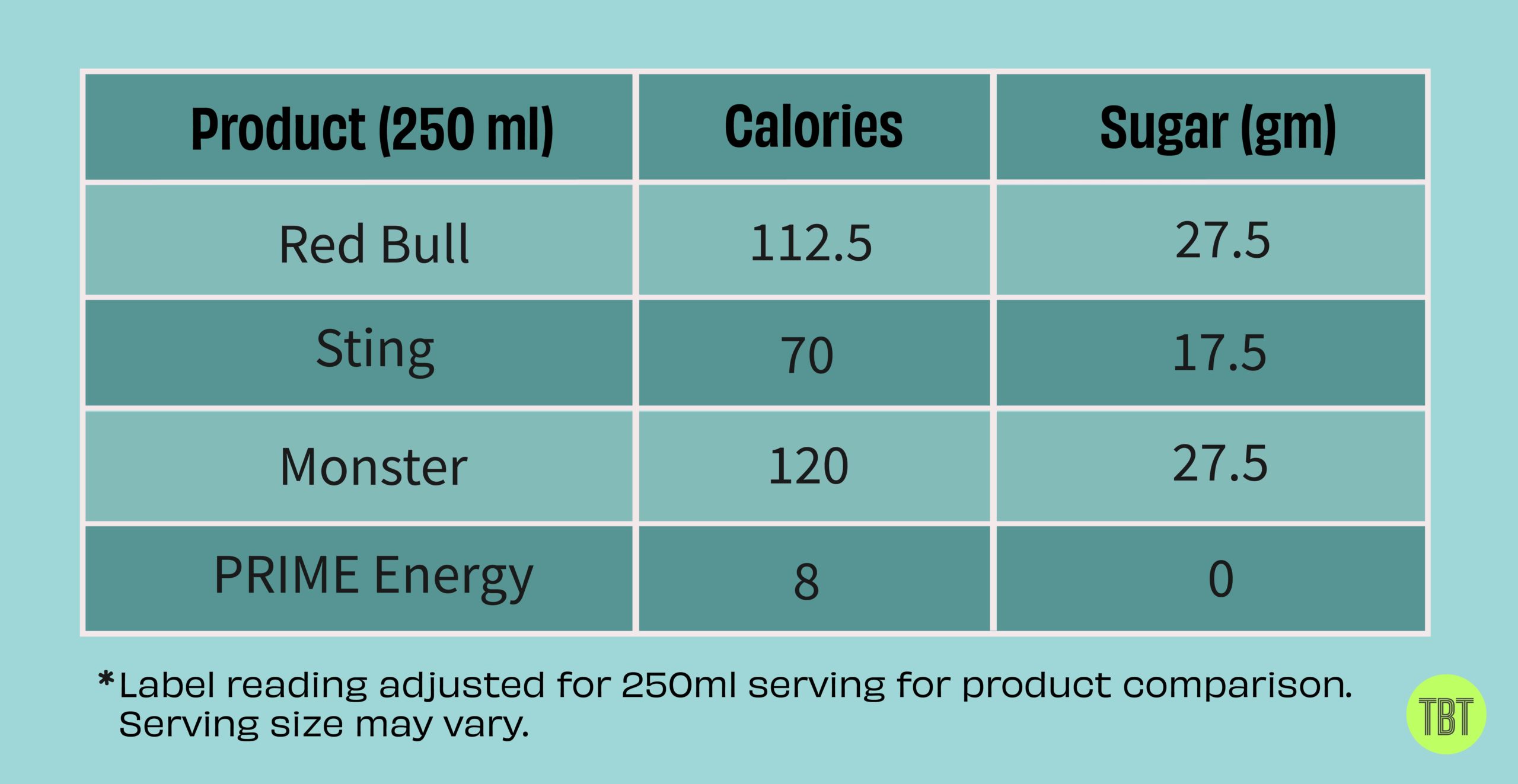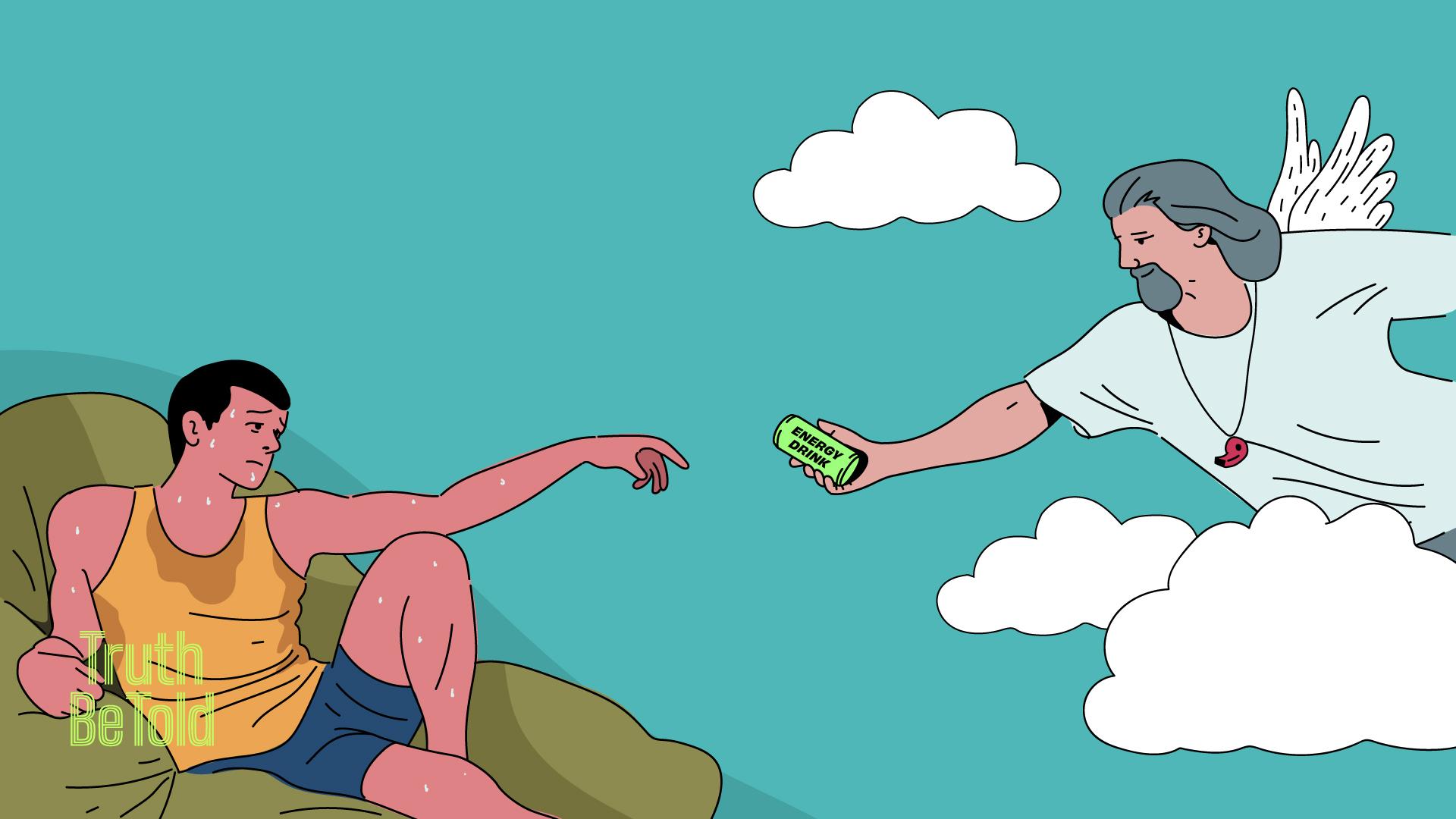Are energy drinks bad for you?
A deep dive into energy drinks
The most trustworthy source of food and
fitness journalism in the country.
Editor’s Note: The genesis of today’s article began with an exchange in our Truth Be Told WhatsApp group back in September. One of our team members mentioned that a 350ml can of PRIME energy drink was selling for more than Rs 1,500 in India. My eyes popped out at the price, so I commissioned a piece from our resident nerd, Ankush Datar, to do a deep dive into energy drinks: good, bad, or what??? It’s a sharp piece—I learned new things while editing it. Hope you will too! (And if you do, share on your social media and tag us?)
Some good news: Ankush is writing his debut book on health and wealth, set to be released in 2024. You can follow him on Twitter and or subscribe to his musings on Substack.
During my college days, a can of energy drink was often my last resort for powering through long study sessions or late-night events. Now, these drinks seem to have moved beyond just occasional use.
While brands like Red Bull never claimed to be health elixirs—my mum frequently warned me against them—the real concern arises when these drinks are marketed, or perceived, as healthful and consumed excessively. Surprisingly, even parents are buying them for their children.
So are they good or bad?
Well, when it comes to nutrition, asking whether something is good or bad is too simplistic. Let’s delve into the details.
1. What are energy drinks?
Let’s clarify what an energy drink is. It’s a beverage containing stimulants like caffeine, along with sugar, amino acids, herbal extracts, and vitamins. These drinks claim to boost energy, alertness, and both physical and mental performance. Students, busy professionals, and long-distance drivers are often the target customers.
Two key points: First, the issue isn’t the drink itself but the quantity consumed and sometimes, the claims made about the drinks. Second, energy drinks are not sports drinks; that’s a different category, which I’ll cover later.
2. Watch out for sugars
Always read the nutritional label. And check for sugar content first—some contain a lot.
Many energy drinks now offer low-sugar or no-sugar versions, replacing sugar with artificial sweeteners like Sucralose and Acesulfame Potassium. Your view on these sweeteners will influence whether you consider the drink ‘healthy.’

Calories and sugar content in some energy drinks
Just don’t think of these as replacements for sugary soft drinks. (Read Samarth’s TBT piece on artificial sweeteners here.)
3. The key ingredient: Caffeine
Most people know that high sugar content is bad, but what often goes unnoticed is the caffeine content.
Remember this: What gives these drinks their jolt is the good old-fashioned caffeine. And caffeine content varies widely among available options in the market, from 70 mg to 200 mg per serve. Which means that many drinks contain as much or more caffeine as a cup of coffee—around 100 mg—along with loads of sugar. Check the label for this information.

Caffeine content in some energy drinks
For instance, one serving of PRIME Energy (350ml) contains 200 milligrams of caffeine, which is twice as much as what’s in Red Bull and equivalent to two cups of coffee—a substantial amount for a single serving.
Assess where this drink fits in with your overall caffeine consumption. Adults are advised not to exceed 400 milligrams of caffeine per day. So, if you’re already having four cups of coffee, an energy drink might push you over the limit.
(Read my previous TBT article on caffeine for details.)
☕ Thanks a latte for sharing this article
4. Not for children
Paediatricians recommend that young people aged 12 to 18 should not consume more than 100 milligrams of caffeine per day. Those under 12 should avoid it altogether.
Most energy drinks carry this warning, often in small print: “Not recommended for children, pregnant or lactating women and persons sensitive to caffeine.”

Warning label on Red Bull
A recent New York Times article on energy drinks flagged this:
“There are concerns that drinks being pitched as healthy are resulting in children and teenagers consuming caffeine in unhealthy amounts. In March, neon-colored Prime Energy cans began appearing in a lunchroom filled with fourth and fifth graders in the Wilmington public school district in Massachusetts. The popular drinks were released in January by the social media stars Logan Paul and Olajide Olayinka Williams Olatunji, better known as KSI.”
According to The Guardian, in 2018, the UK government considered banning energy drinks for young people. This proposal came after evidence showed that high consumption among children was associated with headaches, sleep and concentration issues, and, in rare instances, heart failure.
The government’s research indicated that a quarter of British children who consumed energy drinks would have three or more in one sitting.
The key point is that while an energy drink may be acceptable for occasional adult consumption—depending on individual caffeine and sugar intake—it’s not advisable for children due to the differentiated impact of its core ingredients.
5. Energy drinks vs Sports drinks
Sports drinks serve a different purpose than energy drinks. They are designed to rehydrate the body and replenish glucose, fluids, and electrolytes (sodium, potassium, magnesium, calcium) lost during physical exercise.
However, these drinks are not for everyone. They are most effective for those engaged in high-intensity exercise lasting an hour or more, particularly if it involves heavy sweating. For others, these beverages may simply act as another source of sugar without providing any real benefits.

Energy and sports drinks serve a different purpose
Typically, sports drinks contain water, electrolytes, and often a modest amount of sugar—in most cases, less than what you’d find in a typical energy drink.
A case in point is the difference between ‘Prime Hydration’ (a sports drink) and ‘Prime Energy’ (an energy drink). The Hydration version contains no caffeine, whereas the Energy version has 200mg of caffeine.
🫂 Share this with your ‘prime’ friends
6. What to look for in a hydration drink?
I actually spotted the PRIME drinks recently, during my usual weekly grocery run. I’d heard that this drink had become a global sensation, so I was surprised to see it already available in India. What really caught my eye, however, was the steep price tag—Rs 1,300.
I examined the Prime Hydration bottle’s packaging and noticed it contained electrolytes and antioxidants. But for that amount, I’d expect not just electrolytes and antioxidants but the ability to outrun Usain Bolt!
Let’s use PRIME as a case study to discuss what to look for in a sports drink or any post-workout hydration beverage.
Two key elements to consider are sodium and potassium. We lose sodium through sweat during workouts, and depending on the intensity, rehydration with salt or an electrolyte can help. While potassium, calcium, and magnesium are also lost, sodium is the most critical.
To illustrate, let’s compare PRIME, Gatorade, and a drink I make using FastAndUp, an electrolyte tablet, which I consume after intense workouts.

Sodium, potassium and total sugar in hydration drinks
For my level of activity, the FastAndUp tablet suffices. However, for those involved in high-intensity endurance sports, Gatorade could be a better choice. As for the pricey PRIME drink, its low sodium content makes it a less suitable option, so I wouldn’t recommend it.
Conclusion
I am not going to tell you that ‘water is the best beverage’ and not to indulge in any of these drinks at all. While many of these drinks are not inherently harmful, they can become so when consumed irresponsibly. I hope the information provided helps you make a more informed choice about your beverage consumption.
🫂 Remind your fam to drink responsibly
